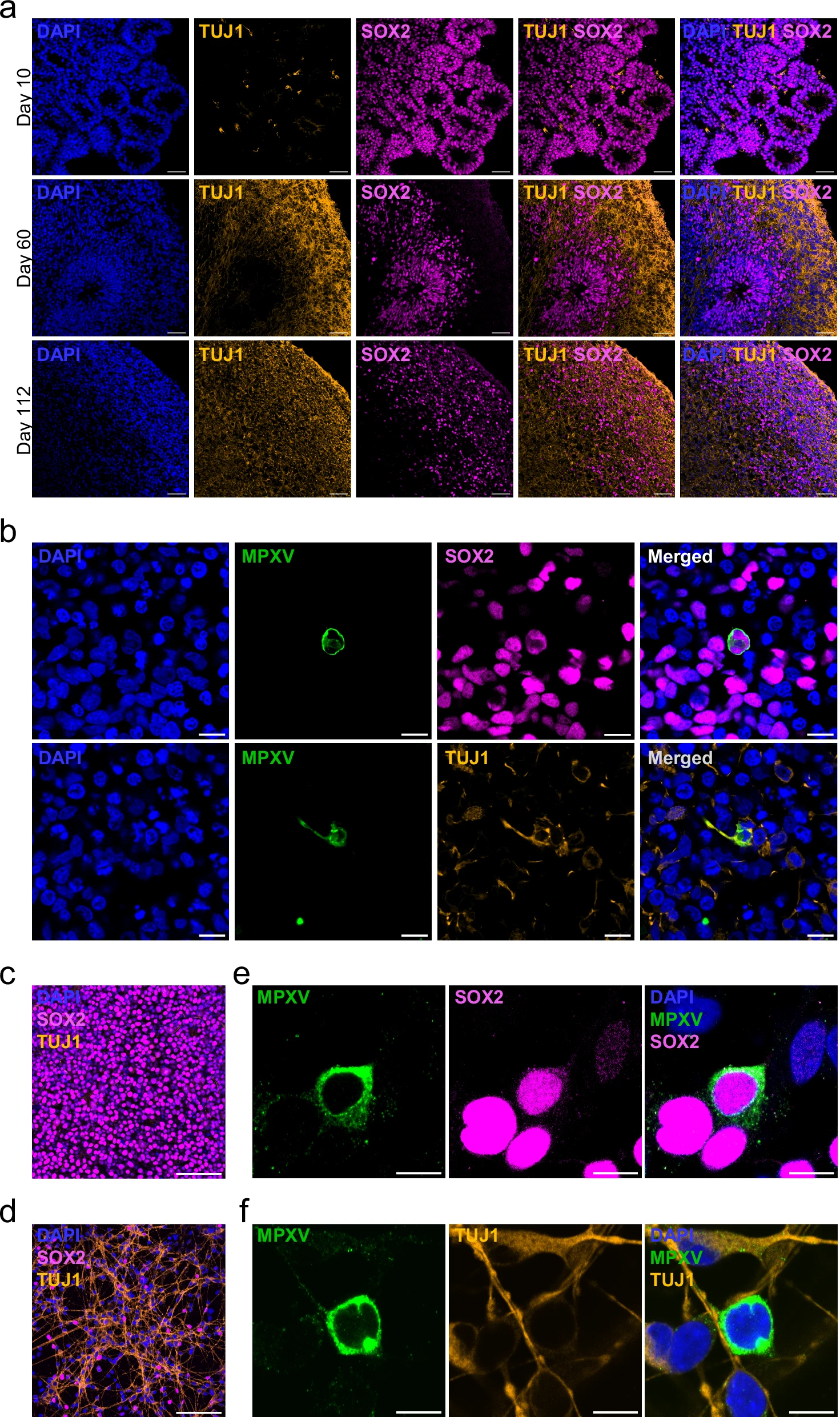a Representative micrographs showing the cell diversity and morphology of ESC-derived hNOs at selected developmental time points (10, 60, and 112 days). Selected markers of NPCs (SOX2, pink) and neurons (TUJ1, orange) are presented. DAPI, blue. Scale bar, 50 µm. b Representative micrographs illustrating the target cells of MPXV in 70-75 days old hNOs 10 days p.i. with a clade IIb MPXV isolate at an MOI of 0.1 TCID50/cell. DAPI, blue; MPXV, green; SOX2, pink; TUJ1, orange. Scale bar, 10 µm. Characterization of 2D NPC (c) and forebrain neuron (d) cultures. DAPI, blue; SOX2, pink; TUJ1, orange. Scale bar, 100 μm. Exemplary image of 2D-cultured NPCs (e) and neurons (f) 8 h p.i. with a clade IIb MPXV isolate at an MOI of 0.01 TCID50/cell. DAPI, blue; MPXV, green; SOX2, pink; TUJ1, orange. Scale bar, 10 μm.
In recent years, three-dimensional (3D) cell culture systems have emerged as a powerful tool to recapitulate processes shaping human organs in health and disease36,37,38,39. These in vitro systems have provided unprecedented opportunities to study host-pathogen interactions in the human host, exploiting a complex system accessible to experimental manipulation40,41,42. Notably, human neural organoids (hNOs), also known as brain or cerebral organoids, represent a versatile in vitro system that recapitulates human brain development and provides an advanced model to study neurological disorders43,44. Motivated by the need to uncover the mechanisms underlying mpox-associated encephalitis, in this study, we investigated the consequences of MPXV neuroinvasion by assessing MPXV tropism and neural cell susceptibility to MPXV infection using hNOs. Our results indicate that MPXV leverages neuritic transport for dissemination, leading to neuronal degeneration, and uncover a potential mechanism contributing to MPXV-induced neuropathology.
https://www.nature.com/articles/s41467-025-61134-0
Consistent with previous observations, through transmission electron microscopy, we captured viral particles localizing not only to cell somata, but also to tube-like cellular extensions, rich in cytoskeletal components, reminiscent of neurites (Fig. 3a)
, detailed immunofluorescence analysis of MPXV-challenged hNOs revealed infection not only limited to cell somata, but extending into thin cell filaments, frequently spanning between two cells within infection foci (Fig. 3b) and disseminated within the organoids’ cell meshworks
Somata of affected forebrain neurons were furthermore observed to undergo major structural changes around the time of bead appearance, including bleb formation

